|
During the hot humid summers in Tennessee, dealing with asthma can be a difficulty for many. Nashville is particularly effected since we are along the Cumberland River and the heat and humidity collect here. Chinese medicine can offer assistance with either acupuncture or herbal remedies. Acupuncture points on the chest, arms, and wrists can help open breathing. Points on the legs and back can be added to relax the fight or flight response that often accompanies breathing difficulty. A wide variety of herbal formulas can address the specific type of asthma that the client is dealing with. A well trained acupuncturist and herbalist will be able to make an individual diagnosis.
1 Comment
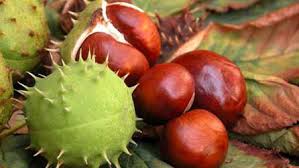 Changes in the weather, chronic stress, and food allergies can all be contributors to painful headaches. A Chinese Medicine approach to resolving a headache takes into consideration many specific symptoms to identify what is the exact imbalance that is causing the headache. With a five element approach we can use signs within the voice, color of the skin, and emotional state to identify a tendency toward headaches. An acupuncturist can also look at the tongue and pulse to see imbalances that may cause migraines. Some headaches may be able to be resolved almost immediately after resting for 20 minutes with needles, others may require 8 to 12 weeks of treatment to resolve a pattern that has been ongoing over a long period of time. Each of the phases has distinctive characteristics that can be used in diagnosis to understand how an individual’s energy is. Here I give a brief introduction to each phase and some of the classic associations with that phase. In the future I’ll provide more detailed descriptions of each phase. Wood 木 mu A tree can be seen as a link between the Celestial realm (天 tian) and the Earthly realm. Many cultures have myths about sacred trees. Ancient Sumerians had a god of vegetation that was a tree of life. Christmas trees evolved from pagan or Celtic traditions invoking the rebirth of the light at the solstice. In both Norse and Mayan mythology a “world tree” was a central pillar around which their cosmologies were organized. In Buddhism, the bodhi tree was the location of the Buddha’s awakening and enlightenment. Wood describes organic growth, the upward budding energy of a plant, and that expansive springing forth associated with initial activity. It has an impulsive, vital, activating energy much like sap rising in a tree. It resonates with the season of spring, the beginning of the day, and the direction of the east. It's color is vital green. It's energy is rising yang and is connected to the wind. The Liver and Gallbladder are the organ systems associated with the wood. One's capacity to adapt and respond is governed by the wood. It links desire, particularly sexual desire, and the capacity for action. Fire 火 huo Fire has been associated with the divine in many cultures across time. Its nature of appearing out if nowhere and disappearing again is magical as are its transformative properties. Some anthropologists suggest that we can thank cooking with fire for our evolution into a large brained thinking species. In world mythology fire is a power of the gods that is stolen by a trickster for the benefit of humanity. Lighting can be a voice from the Celestial realm. In the Old Testament God appears as a burning bush to Abraham. The phoenix is seen as rising out of a transforming fire. Fire also has often been used as a metaphor for desire or passion. Fire describes burning and combustion, warmth, light, luxuriant growth, and joy. It refers to fire, flame, blaze, climax, zenith as well as maturity and ripening, accomplishment and happiness. It contains an expansive feeling of upward movement and excitement. The season of the fire is the summer. It is associated with midday, blood and body heat, the direction of the south and the color red. It is the height of the upward energy of the yang or yang at its most expansive. It is the Heart and Small Intestines as well as the Heart Protector (or Circulation) and Triple Heater in body systems. Earth 土 tu The earth is the source of all of life and is viewed as a mother in many cultures. Many earth goddess figures, such as the Venus of Willendorf, which depicts a full figured fecund woman, are some of the oldest human made artifacts found. For the Greeks earth was Gaia, to the Hindus Durga or Shakti, and around the globe a mother to us all. The Earth is the nurturing feminine counter part to the masculine Sky. Within the five phases the earth is a matrix in which living processes develop or a fulcrum around which the other phases transform one into the other. Earth describes soil, ground, dust, clay and ashes, the surface of the earth on which everything rests and from which everything grows. It is the central hub or pivot and the place of transformation that promotes exchange and interchange. Its color is yellow or the brown of dirt denoted by the Chinese word 黃 huang. It is plagued by damp and humidity. It’s energy is circular and transforming, yielding and bringing forth, sowing and harvesting. It is connected to the Spleen/Pancreas and Stomach and their work of assimilation and distribution of nourishment. Metal 金 jin Humanity has long valued the metallic treasures of the planet. The dragon’s hoard, sacred chalice, and philosopher’s stone are the object of many a quest in search of uncorrupted purity. Carl Jung identified this as a metaphorical journey to self realization. An alchemist’s elixir or a pearl of wisdom as the riches of life. Weaponry is another metaphor for the energy of the metal phase. Something that cuts away the evil or protects the boundary of the pure. Metal describes all forms of metal, ore, and gemstones. It refers to concentration, coagulation, crystallization, contracting and condensing, casting as well as insight and conceptual thought. It is both the refinement of pure essence as well as the remaining essence when all else has been destroyed. There is an aspect of loss and reduction about the metal. It is the seed of a plant. It is about energy moving in toward the center in its concentrated form. It is associated with autumn, sunset, the west, melancholy, and sadness. Its color is white - the color of death and purity in Chinese culture. Its climatic feature is dryness and it is the beginning of the yin cycle. It restrains things into form. It is connected to the Lung, skin, and Large Intestine. Water 水 shui
Water is like the Dao itself. The source from which we all arise and to which we return in many mythologies. It is the ocean and the womb. Floods are significant early tales across the globe. The Greeks crossed the river Styx to get to the land of the dead, Noah saved humanity and all the animals in a floating houseboat, and Hindus return their dead to the Mother Ganges. The power of water is vast. The seas are the deepest most unknown places on the planet that hold the origins of who we are. Water describes fluids, flowing, and streaming movement. It refers to water in all its forms from streams and rivers to seas, oceans, steam and ice as well as the flow of feelings and the hidden secret, dark, mysterious energy within each of us. It is downward motion and heavy sources. Associated with the north, winter, midnight, fear, and cold. In the body it is the Kidneys, Bladder, and bones. One of the fundamental insights of ancient Chinese thinking was that everything is always changing. The five phases are a way to classify those changes. The Yi Jing identifies 64 points along the wheel of change and is one of the more complex ways to classify the oneness of constant change. The five phases is a system that people can easily use to help give them insight into what dietary, exercise, and other lifestyle changes can help bring them into balance.
One pattern that can be useful to note is the order in which change is likely to occur. Now of course, change can occur in any order, however, it usually follows certain directions, such as the order of the seasons of the year. Spring leads to summer and fall leads to winter. The stages of life flow in this direction from conception in the water of the body to growth during our youth, associated with the wood, leading to maturation and the desire to connect in young adulthood during the fire. The consequences of those connections lead to the work, labor, and care taking of the earth phase. After we have built material wealth, then we let some of that go as we hone the purpose of our life. A sharpening in the metal stage. In old age our wisdom emerges and we are again in the water. The order of these phases is understood as the generating cycle. Wood creates fire which in turn becomes earth and around the circle. The Chinese word for this relationship is called 生 sheng. The meaning of this term is to give birth, to be born, to grow, or to be living. It can also be used to express the lighting of a candle or torch - giving birth to the flame. The earliest forms of this character come from a picture of a plant growing or sprouting. Understanding what creates the next phase can help us bring that change on for a client. If you want to create more earth for yourself feed it with fire. In addition to the creating (生 sheng) relationship between the phases there is also a control relationship between them. If the five phases are drawn in a circle then a pentagram can be draw in the middle and control is revealed along this path. See the picture attached. The Chinese word for this relationship is 克 ke, meaning to restrain, to overcome, or to subdue. One might use sour or wood foods to control our cravings for sweet or earth foods. Looking at a phase as an element in nature we can imagine how the wood roots of a tree can hold the earth and therefore control it. Water can, of course, control fire. The heat of a fiery forge can make metal malleable and the sharp blade of an axe can fell a tree. By considering these metaphors we can activate the restraint of one system of the body on another. The Kidneys as part of the Water can anchor the heart which is part of the Fire. This insight can direct our choice of which meridians to needle as an acupuncturist and it can help people choose foods or exercise practices that can be helpful to them as individuals. I’ll explore more suggestions in later posts that will focus in detail on each phase. The main reason to divide the universe into five phases is to identify patterning. Some argue that this pattern is constructed by humans and others say that the pattern exists in some dimension beyond the human realm. Regardless, if we can recognize a pattern that gives us information about what we can do to move change in a direction that pleases us. This is what we are trying to do with Chinese Medicine. Notice how things are and then gently shift them toward how we want them to be. It’s definitely a delicate dance, and very interesting.
The patterning of things to the five phases is a correspondence. It is looking at something or smelling, or feeling it and then identifying which phase it is like. This is to some degree metaphorical or at least a way that, how we identify something as a thing with language, let’s us understand or perceive what it is like. Your smile is like the sun. There are many charts in Chinese Medicine listing the correspondences with the Wood aligned with spring, the color green, the scent of rancid, the taste of sour, the organs of the Liver and Gallbladder and the voice of shout as well as many other things from domestic animals to planets. Its a way to look at anything in the world and place it into a category. The taste of pungent has a metal characteristic. The direction of north has the feel of water. The climate of heat is like fire. There is a certain amount of obvious standardization for these things. Then if you continue to look at different lists created by different people over time you begin to notice that they don’t all agree. It’s very helpful to explore each phases as it appears in nature and explore it from your own sensory perception. Touch water and notice that it is heavy, dense, fluid and moveable. Which season, another arbitrary division of the year into parts that significantly depends on where you live, is most like water? The perception of the individual is most important. Additionally there is a value to working with a language that is common to the people that practice this medicine. Another important aspect to consider is how one’s language determines how we think about things and even what things are. Color is a great example of something that is very linguistically and culturally determined. Not everyone draws the line between red and orange in the same place. Part of the value of the lists is that these help us understand the cultural definition of each phase. Within a phases things can be infinitely subdivided into five parts. For example, within the types of dogs there are fiery dogs, woody dogs and watery dogs, although obviously everyone would classify dogs, in general, as fire. See how tricky this can get. For the purposes of Chinese Medicine we are most interested in seeing how these correspondences relate to our health. What foods will be best for our condition? What type of exercise will be best to heal us? What organ systems and meridians of qi should we manipulate to bring about happiness? Next we will look more deeply into how the phases are related by relationships between them which show what kind of energy creates or controls another kind of energy. One of the most significant ways that practitioners of Chinese Medicine understand the balance of the body, mind and spirit are the five phases or wu xing 五 行. The most basic way that Daoist thinking divides the universe is into yin and yang. This two part division is know to many in the common symbol. The five phases are a way to subdivide the universe into five stages. This understanding can then be applied to seasons of the year, stages of life, and systems of the body as well as many other things. The origins of these ideas have been part of Chinese philosophy as far back as the second or third millennium BCE. The five phases that lie at the heart of Chinese Medicine are actually a simple concept that is also profound - the circle. The phases of wood, fire, earth, metal, and water are stations of that circle. The circle represents the oneness of the Dao, a wholeness without beginning or end. By its nature a circle reflects the sun and moon and earth itself. Additionally it has a connotation of passing time or seasons. This meaning has been denoted by many different cultures from the circular nature of Stonehenge in prehistoric European culture to complex Aztec calendrical systems. Labyrinths and mandalas also use a circle to represent our inner journeys. The circle is a map for us to follow to bring us into harmony with the flow of the seasons and cycles of life leading us to balance and good health. The five phases are a way to align human activities and organ system with the natural rhythms of the universe.Many times 五行 (wu xing) is translated as five elements from the Greek system of humoral elements, however, the Chinese character 行 is actually composed of a left and right foot stepping and therefore has a connotation of movement much more like a phase of energy than a static element. The transitory nature of everything is a long standing theme in Daoist philosophy and fully explored in the Yi Jing (I Ching) or Classic of Change. The order of the phases has changed over time, but by the Han Dynasty the cycle of wood becoming fire becoming earth becoming metal becoming water has become standard and corresponds closely to the energetics of the seasons of the year. In my next post I will explore the energetics of the elements and the relationships between them. 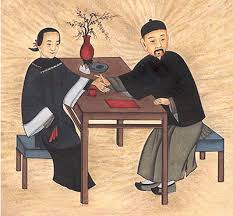 What is a practitioner feeling for when they take your pulse and what does that tell them about what’s going on with you? Several things are important. One is the place where the practitioner is feeling. Each wrist has three positions, one on the wrist crease over the radial artery where it overlays the styloid process and then a finger width toward the elbow and then two finger widths toward the elbow. Each of these positions corresponds to a different system of the body. Check out the illustration above. Pulse diagnosis has deep roots in Chinese Medicine, the roots of which are described in the classic text of the Neijing Suwen. An examination of the pulse is an important part of many traditional medical systems such as Ayurvedic Medicine, Tibetan Medicine, and Islamic Medicine as well as contemporary Western Medicine. In a Western clinical setting the pulse is felt to asses the heart rate and that is also considered in Chinese Medicine. In addition to speed, 28 other qualities of the pulse are considered. There are actually several variations and interpretations of the pulses. Reading the pulse was a skill that was developed slowly over many years and taught within medical families. The methods and meaning were carefully guarded secrets. Shigehisa Kuriyama examines the various ways Chinese and early Western practitioners viewed the pulse in his fascinating book, The Expressiveness of the Body and the Divergence of Greek and Chinese Medicine. The ancient Chinese physician Li Shi Zhen is considered a great master of pulses and wrote the classic, Lakeside Masters Study of the Pulse. A wonderful translation is available from Blue Poppy Press. Leon Hammer’s Chinese Pulse Diagnosis: A Contemporary Approach has shown him to be a modern master of the art. Contemporary practitioners study a variety of techniques that give them insight into the pulse. Taking into consideration the location, its level, and the quality of the pulse let’s the practitioner identify deviations from normal that help identify what illness or imbalance may be occurring in a client’s body, mind or spirit. A skilled practitioner will then correlate this information with a tongue diagnosis, and a client’s reported complaints to create a full diagnosis as well as a treatment strategy. In addition to the pulse, practitioners of Chinese Medicine also use the tongue to identify a diagnosis for a client. The tongue, like the pulse, is seen as reflecting all of the systems of the body. When we look at the tongue we consider several different aspects of what we see.
First we look at the overall color of the tongue. An ideal tongue is a healthy pink, not too pale or too red. Paleness indicates blood deficiency and redness indicates inflammation or heat. Dark patches or a purplish color indicates blood stasis. Next we look at the shape of the tongue. A healthy tongue should be an even thickness, not too puffy or too thin and have smooth edges. If the edges of the tongue are scalloped that indicates that the Spleen is not holding the tongue and the expanded tongue is pressing against the inside of the teeth creating the scallops. This is a strong sign of Spleen qi deficiency. The surface of the tongue is also important to consider. A healthy tongue has a smooth surface, without cracks, and a minimal amount of coat. If the surface of the tongue has cracks or figures that indicates a yin or fluid deficiency in the person. If the tongue has a thick yellow coat that indicates dampness in the person’s system. Considering all of these factors and the location on the tongue of these signs tells the practitioner what is going on in different systems of the body. Careful consideration of the tongue can reveal a good bit to the practitioner about the balance of the client. Using this perspective in conjunction with feeling the pulse helps reveal how acupuncture and herbs can be used to bring someone back into balance. Acupuncture has proven its value in its long history of practice. While acupuncture has changed in contemporary times by being done with single use sterilized needles that are as thin as a human hair it can address also address modern concerns. The World Health Organization lists many conditions, for which it considers acupuncture to be effective treatment, including the following: Diseases, symptoms or conditions for which acupuncture has been proved-through controlled trials-to be an effective treatment: Adverse reactions to radiotherapy and/or chemotherapy Allergic rhinitis (including hay fever) Biliary colic Depression (including depressive neurosis and depression following stroke) Dysentery, acute bacillary Dysmenorrhoea, primary Epigastralgia, acute (in peptic ulcer, acute and chronic gastritis, and gastrospasm) Facial pain (including craniomandibular disorders) Headache Hypertension, essential Hypotension, primary Induction of labour Knee pain Leukopenia Low back pain Malposition of fetus, correction of Morning sickness Nausea and vomiting Neck pain Pain in dentistry (including dental pain and temporomandibular dysfunction) Periarthritis of shoulder Postoperative pain Renal colic Rheumatoid arthritis Sciatica Sprain Stroke Tennis elbow Diseases, symptoms or conditions for which the therapeutic effect of acupuncture has been shown but for which further proof is needed: Abdominal pain (in acute gastroenteritis or due to gastrointestinal spasm) Acne vulgaris Alcohol dependence and detoxification Bell’s palsy Bronchial asthma Cancer pain Cardiac neurosis Cholecystitis, chronic, with acute exacerbation Cholelithiasis Competition stress syndrome Craniocerebral injury, closed Diabetes mellitus, non-insulin-dependent Earache Epidemic haemorrhagic fever Epistaxis, simple (without generalized or local disease) Eye pain due to subconjunctival injection Female infertility Facial spasm Female urethral syndrome Fibromyalgia and fasciitis Gastrokinetic disturbance Gouty arthritis Hepatitis B virus carrier status Herpes zoster (human (alpha) herpesvirus 3) Hyperlipaemia Hypo-ovarianism Insomnia Labour pain Lactation, deficiency Male sexual dysfunction, non-organic Ménière disease Neuralgia, post-herpetic Neurodermatitis Obesity Opium, cocaine and heroin dependence Osteoarthritis Pain due to endoscopic examination Pain in thromboangiitis obliterans Polycystic ovary syndrome (Stein-Leventhal syndrome) Postextubation in children Postoperative convalescence Premenstrual syndrome Prostatitis, chronic Pruritus Radicular and pseudoradicular pain syndrome Raynaud syndrome, primary Recurrent lower urinary-tract infection Reflex sympathetic dystrophy Retention of urine, traumatic Schizophrenia Sialism, drug-induced Sjögren syndrome Sore throat (including tonsillitis) Spine pain, acute Stiff neck Temporomandibular joint dysfunction Tietze syndrome Tobacco dependence Tourette syndrome Ulcerative colitis, chronic Urolithiasis Vascular dementia Whooping cough (pertussis) |
AuthorMark is a board certified and licensed acupuncturist Archives
March 2019
Categories |
Proudly powered by Weebly

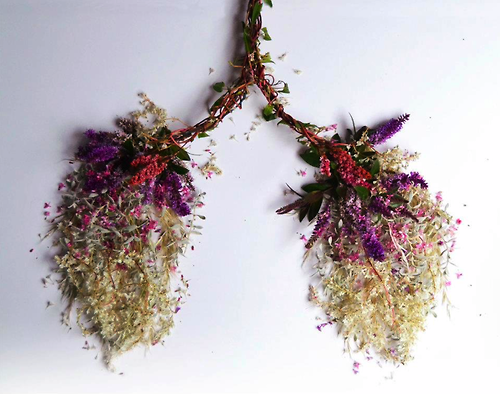
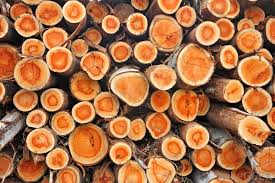
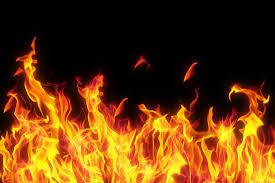
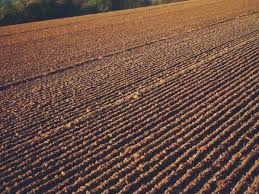
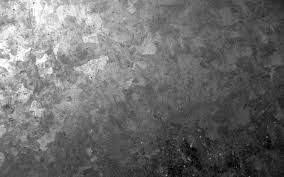

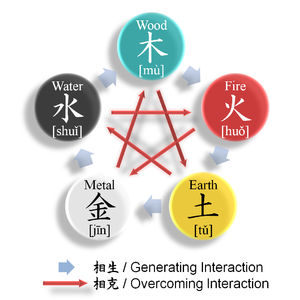
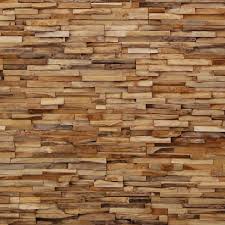
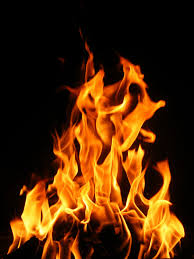
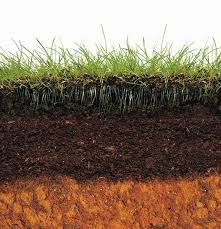
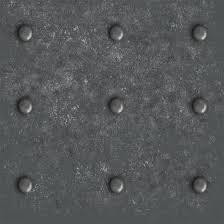
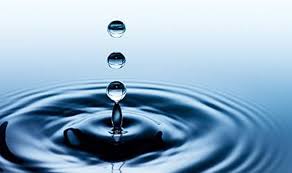
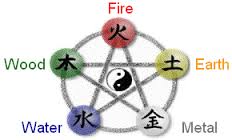
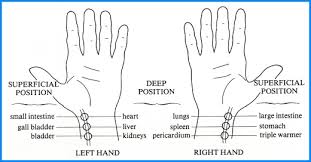
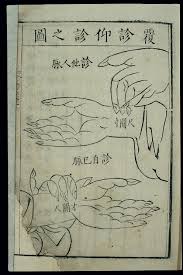
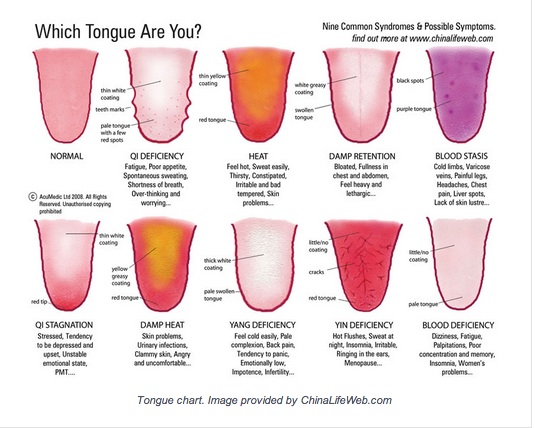
 RSS Feed
RSS Feed